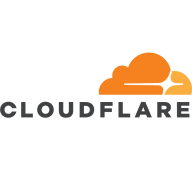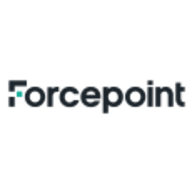


Forcepoint Data Loss Prevention and Cloudflare One both compete in the cybersecurity space, focusing on data protection and network security. While Forcepoint DLP excels in comprehensive data protection, Cloudflare One has the advantage with its ease of use and wide-reaching DDoS defense.
Features: Forcepoint Data Loss Prevention integrates components such as Endpoint Discovery and Network Discovery, which bolster its protective capabilities. It offers user-friendly configuration options with out-of-the-box templates and extensive reporting features. Its strong integration for securing network and cloud applications enhances its effectiveness. Cloudflare One's strength lies in its simplicity and powerful DDoS protection, paired with application-based access and straightforward user management.
Room for Improvement: Forcepoint DLP can enhance its offerings by expanding language support, streamlining policy update processes, and improving technical support, particularly in regions like South Africa. Cloudflare One has an opportunity to refine its documentation, especially concerning migration scenarios, and make its pricing models clearer.
Ease of Deployment and Customer Service: Forcepoint DLP supports on-premises, hybrid, and cloud deployments but faces challenges with complexity and regional support consistency. Customers generally value the support quality but note variations. Cloudflare One is optimized for public cloud deployment and is praised for easy onboarding and reliable support, though it could benefit from enhanced documentation.
Pricing and ROI: Forcepoint DLP is perceived as costly, yet its integration depth offers potential ROI through robust compliance and data protection benefits. However, its pricing might not be suitable for smaller businesses. In contrast, Cloudflare One is competitively priced, especially compared to Akamai, focusing more on security assurance than direct financial returns, providing solid protection with lower upfront costs.



| Company Size | Count |
|---|---|
| Small Business | 46 |
| Midsize Enterprise | 8 |
| Large Enterprise | 25 |
| Company Size | Count |
|---|---|
| Small Business | 9 |
| Midsize Enterprise | 2 |
| Large Enterprise | 10 |
| Company Size | Count |
|---|---|
| Small Business | 30 |
| Midsize Enterprise | 6 |
| Large Enterprise | 27 |
Cloudflare is a highly-regarded Content Delivery Network (CDN) and a Distributed Denial-of-Service (DDoS) protection solution. The robust global connectivity cloud platform that is Cloudflare ensures users are able to connect to the Internet quickly, securely, and reliably. Cloudflare is one of the world's largest networks in the marketplace today. Using Cloudflare, businesses, educational entities, NGOs, vloggers, bloggers, and anyone else with an internet presence can experience more secure, faster websites and applications.
Currently, there are millions of Internet locations on Cloudflare, and the Cloudflare network
continues to grow every day by the thousands. The solution is able to fulfill the requests for
millions of websites seamlessly and serves on average 45 million HTTP requests per second.
Cloudflare has safe, secure data centers in close to 300 cities worldwide to ensure every
client request is filled as quickly as possible. It is Cloudflare’s edge network that makes this
possible by keeping content and other services as close to each client as possible, so the
information requests are always only seconds away.
Many organizations that work in democracy, civil society, human rights, or the arts are able to
access Cloudflare's highest levels of protection for free via Project Galileo. Additionally, official
election websites can be secured from hacking and fraud through Cloudflare’s Project
Athenian, also at no additional cost.
Cloudflare can also help organizations of all sizes develop a robust zero-trust strategy to
ensure the highest levels of productivity and profitability. Employees, stakeholders, and end users have a greater level of satisfaction and overall improved user experience, which can, in
turn, result in higher revenues and overall ROI. Zero-trust and BYOD (bring your own device)
access ensure end users and employees always have the best resources and technology
available to them at all times.
Cloudflare benefits
Cloudflare has many benefits. Some of its most valuable benefits include:
- Faster load times
- Robust DNS security
- Intuitive cloud Web Application Firewall (WAF)
- Free universal SSL
- Image enhancement
- Automatic browser caching
- Next-generation cloud load balancer
- Accelerated Mobile Pages (AMP)
- Rate limiting
- Minification
- Zero-trust capabilities
- Cost-effective
- Reduced carbon footprint
Reviews from real users
“Many websites require an SSL certificate because they sell stuff and want SSL. Cloudflare
comes with an SSL certificate built in. It's automatic. You sign yourself up for Cloudflare, and
an SSL certificate automatically protects your website. If you have a connection between your
website and your host, the server, Cloudflare, and the host, you don't necessarily need a
certificate.” Spencer M., Owner at Tech Exchange
“What I like best about Cloudflare is that my company can use it to trace and manage
applications and monitor traffic. The solution tells you if there's a spike in traffic. Cloudflare
also sends you a link to check your equipment and deployment and track it through peering,
so it's a valuable tool.” Daniel P., Network Engineer at Ufinet
“The most valuable feature of Cloudflare is the GUI. You are able to control the solution very
well through the interface. There is a lot of functionality that is embedded in the service.” PeerSpot user, Competence Center Manager at a tech services company
Cloudflare One is a single-vendor Secure Access Service Edge (SASE) platform that enables Zero Trust security and any-to-any connectivity across enterprise applications, users, devices, and networks. Cloudflare One helps organizations simplify, modernize, and consolidate their IT architecture by converging security and networking services on our single global network and control plane.
Many organizations start by adopting our Security Service Edge (SSE) services — like ZTNA, SWG, CASB, and DLP — to reduce their attack surface, stop threats like phishing and ransomware, protect data, and apply identity-based Zero Trust verification across web, SaaS, and private app environments. Others prioritize simplifying network connectivity across offices, data centers, and cloud environments with our WANaaS.
Every service is available for customers to run in every location across Cloudflare’s global network, which today spans 330+ cities in 120+ countries, so you can scale connectivity with fast, consistent protections everywhere.
Forcepoint Data Loss Prevention offers comprehensive data protection with strong template support, seamless cloud integration, and detailed reporting. It ensures data security through extensive endpoint, network, and server-level controls.
Forcepoint Data Loss Prevention is equipped with advanced fingerprinting technology, optical character recognition, and a large library of predefined rules. Organizations gain comprehensive data visibility and effective policy enforcement, supported by dynamic user behavior analysis and compliance capabilities. Its intuitive interface and flexible deployment options position it as a top choice for data security, although it could improve in communication reliability and language support. Complex reporting, machine learning integration, and cross-platform compatibility require enhancements.
What are the key features of Forcepoint Data Loss Prevention?Forcepoint Data Loss Prevention is utilized extensively in industries like finance and law to protect sensitive information from unauthorized transfers. It secures enterprise legal documents, financial assets, and personal data, employing features such as OCR to safeguard data across network, email, and cloud channels.
We monitor all Data Loss Prevention (DLP) reviews to prevent fraudulent reviews and keep review quality high. We do not post reviews by company employees or direct competitors. We validate each review for authenticity via cross-reference with LinkedIn, and personal follow-up with the reviewer when necessary.